The K-MAX is one of the most versatile load-carrying helicopters available and is famed for the distinctive ‘servo-flap’ configuration of its rotors, which has become the trademark of its manufacturer, Kaman.
Although it is recognized now for its high performance in domestic as well as combat settings, the K-MAX was not always popular and was only saved from the scrap heap by a number of later innovations that made it commercially viable.
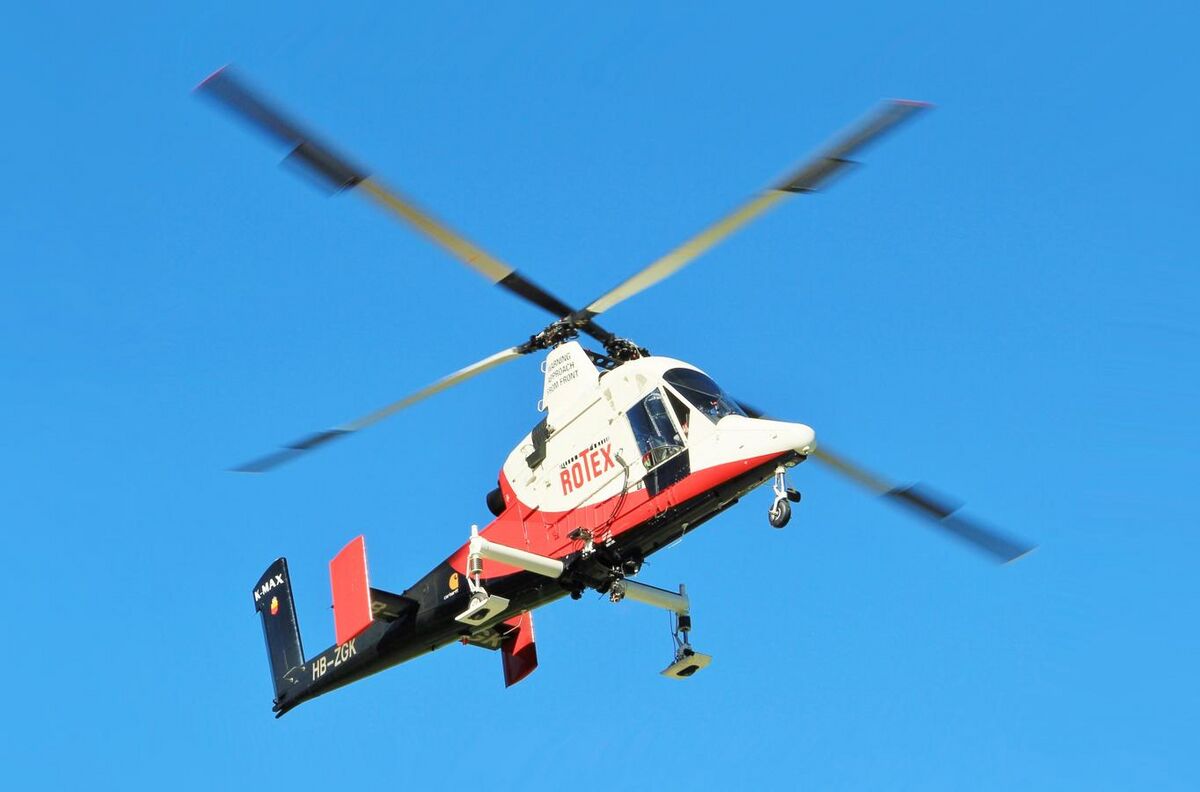
Development
At the dawn of the 1990s, the Kaman Corporation, founded by Charles Huron Kaman in 1945, noticed there was a gap in the market for a helicopter that could carry loads of a medium tonnage.
They believed the company’s signature intermeshing rotor and servo-flap, a concept that had been developed by Kaman that increased the stability and ease of control of helicopters, would be suitable for such a machine capable of carrying out external lift operations. Kaman’s new project aroused the interest of the US Department of Defense, who saw the helicopter’s potential allocated funding to the company.
On December 23rd, 1991, the first K-MAX prototype, designated the MMRI or Multi-Mission Intermeshing Rotor Aircraft, was flown for the first time by test pilot Alan D.
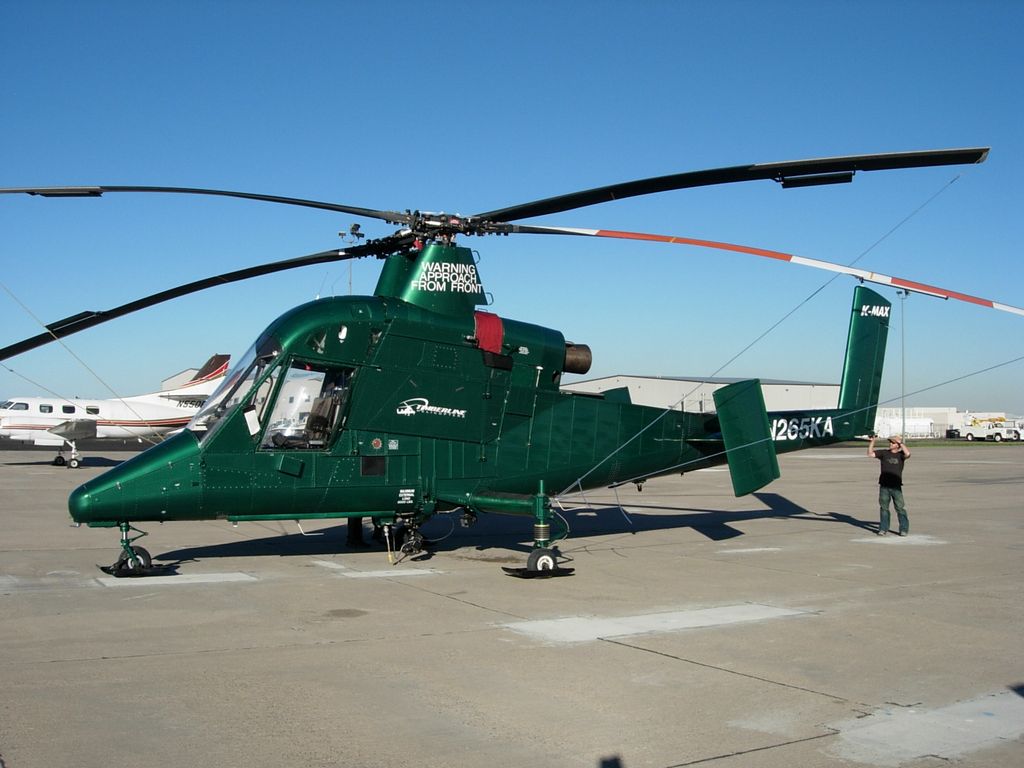
‘Al’ Ashley in Bloomfield, Connecticut. Some of its design features included a flat windscreen, later changed to a curved configuration, and a fixed horizontal tail surface, which was later modified so that it freely moved with the movement of the helicopter.
These later additions ensured that the chopper remained optimally aerodynamic and easy to handle.
In March 1992, Kaman revealed to the world that they were working on a new prototype, which was to be tested at their impressive new facility of 1,395 square meters in Bloomfield which opened in Spring 1993.
After a lengthy certification process, the first batch of K-MAX helicopters were delivered in 1994 to customers including the Louisiana Pacific Corp and Wescor Forest Products. It was next introduced to Europe in September 1995 when it was exhibited at Helitech 1995 in Redhill, England.
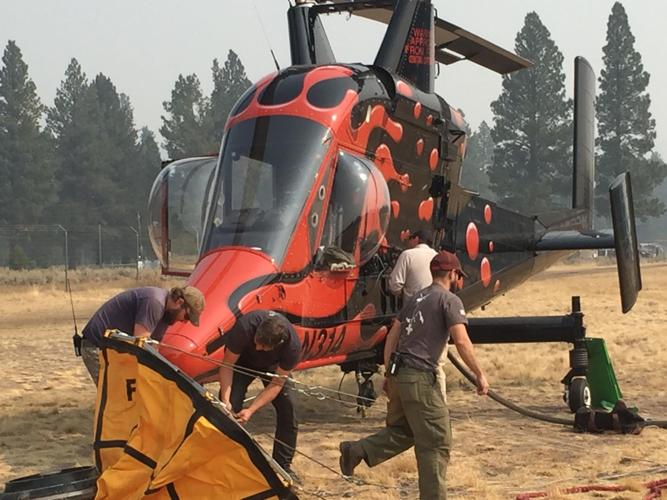
However, Kaman was unable to sell many of the K-MAX when it first entered the market, mainly because it was very expensive, clocking in at 3.5 million dollars for a single unit, and had not yet achieved the popularity of their other lines, the H-43 Husky and the SH-2 Seasprite.
By 2003, after only 38 had been manufactured, production was discontinued due to low consumer interest.
Over the next few years, the company embarked on a journey to reinvent the K-Max. In 2006, a firefighting version of the K-MAX called the Fire Max, flew for the first time on November 16th, featuring a fixed 2,649 liter water tank system created by Kawak Aviation Technologies, that can refill from shallow water sources in 20 to 30 seconds using a hydraulically powered hover refill pump.
In March 2007, in collaboration with Lockheed Martin, Kaman announced it was working on an unmanned version of the K-MAX to be used by the military.
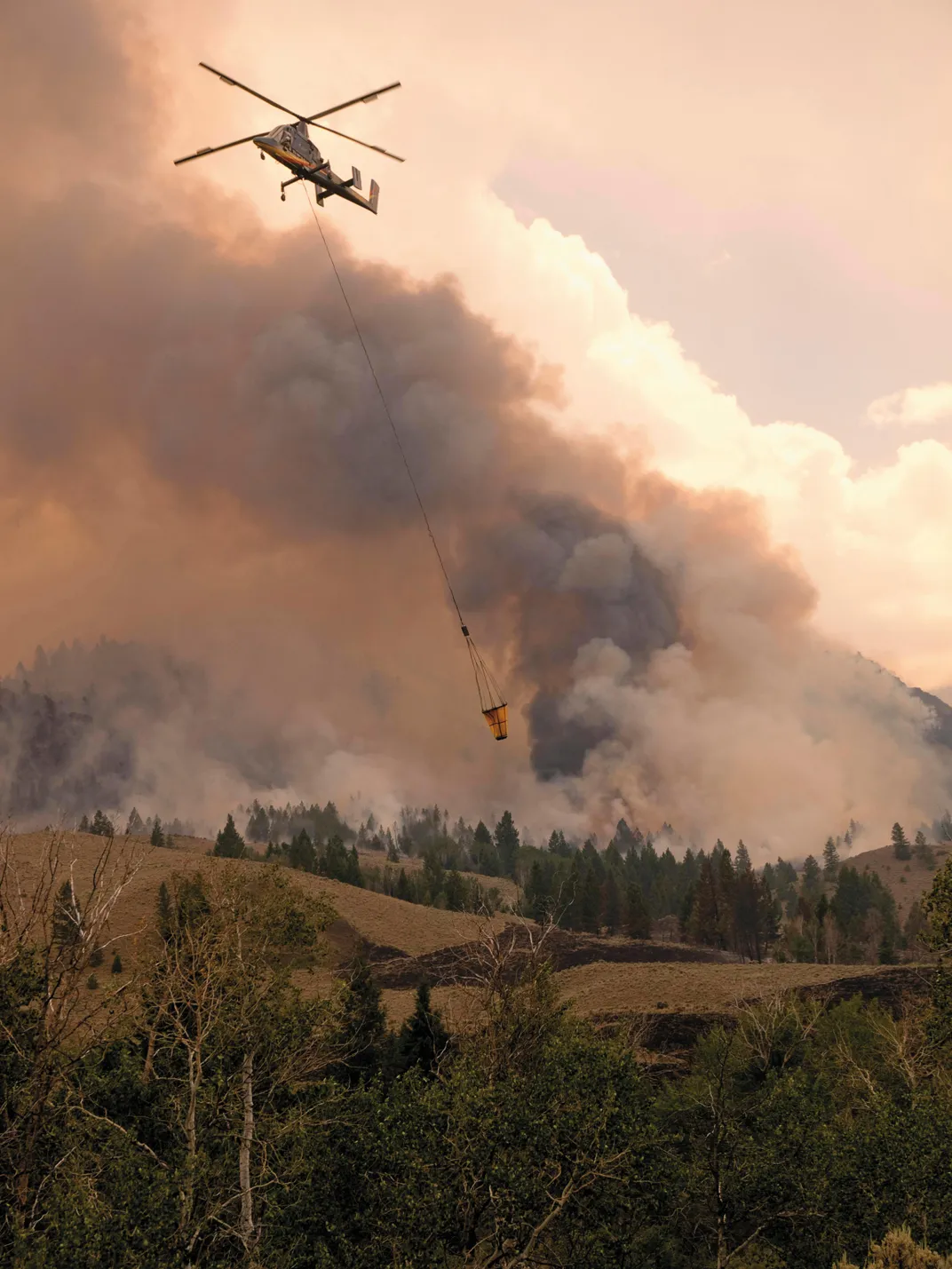
In June 2008, the company successfully demonstrated to the US Army that the unmanned helicopter could take-off, land, and also pick-up, carry and deliver a load of 3,000 pounds.
The K-MAX proved even more impressive during the second demonstration in November 2008, which illustrated how it could automatically land and drop off a load of 6,000 pounds whilst being controlled by Lockheed Martin’s Kineforce mission management system.
In 2011, production of the K-MAX was resumed after the US military expressed interest in deploying the unmanned version, to be controlled remotely on the battlefields of Afghanistan. That year, the unmanned K-MAX would even feature as one of the 50 best innovations of 2011 in the illustrious TIME magazine for its potential to help in the fight against the Taliban.
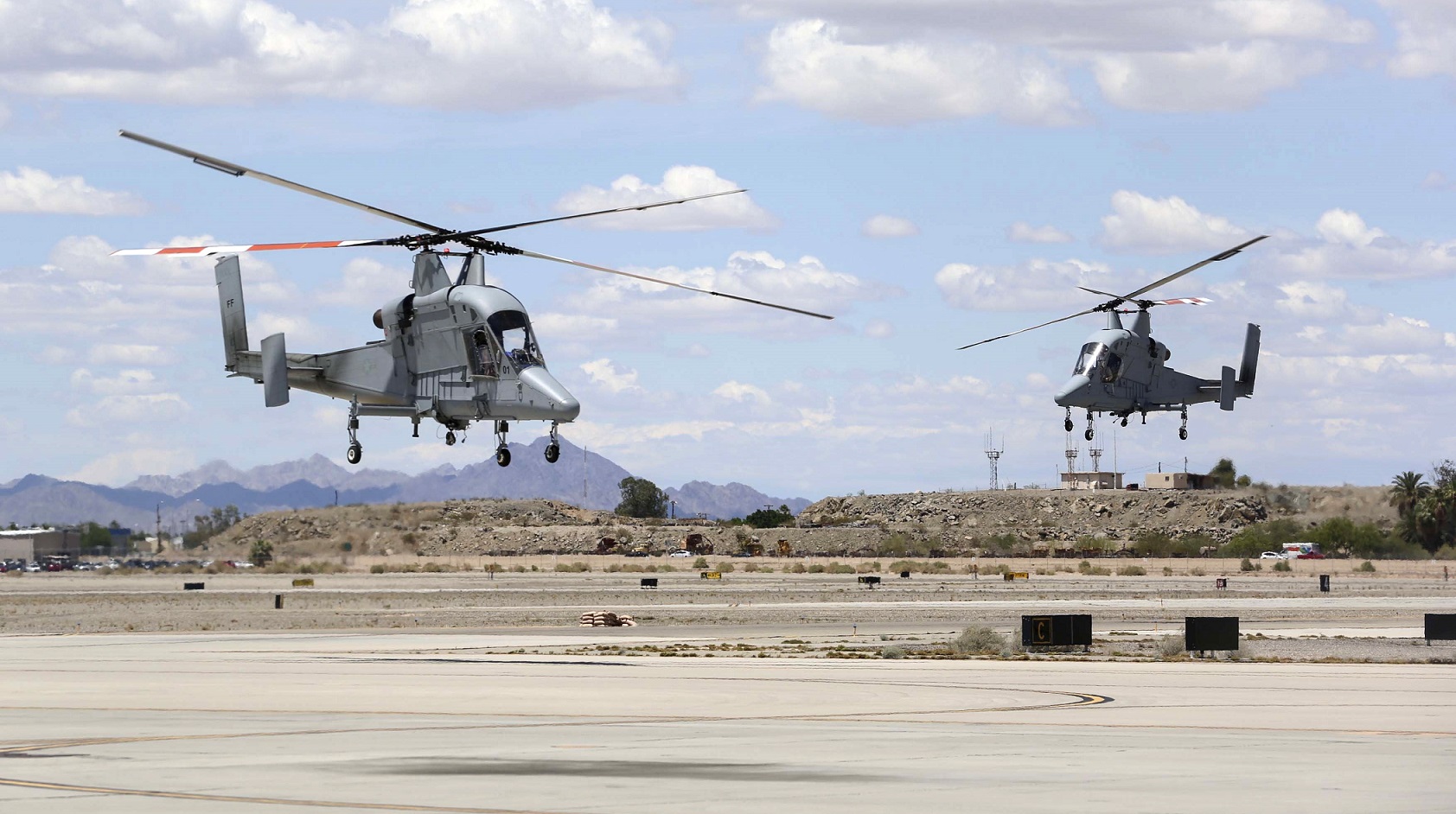
The first K-MAX produced as part of the new program was successfully tested on May 12th 2017 and shipped to Lectern Aviation Supplies, based in Hong Kong, to be employed to fight against forest fires in China, and 15 others have also been sold to various other civilian clients.
In March 2019, Kaman unveiled new plans to redesign the blades so they were fashioned out of entirely composite material, an innovation that will not only improve their durability but the general performance of the helicopter.
The K-MAX
The Kaman K-MAX helicopter is 4.1 meters tall, 12.7 meters long, has a maximum weight of 12,000 pounds, and is powered by a model Honeywell T53-17 gas turbine with a take-off power of 1,007 kw, fed by a fuel tank that has a maximum volume of 865 liters and burns 321.7 liters of fuel per hour, enabling it to reach a top speed of 185.2 kph and a maximum range of 1,852 meters.
It can lift a maximum of 6,000 pounds with a cargo hook attached to a carriage underneath the chopper that can move around freely.
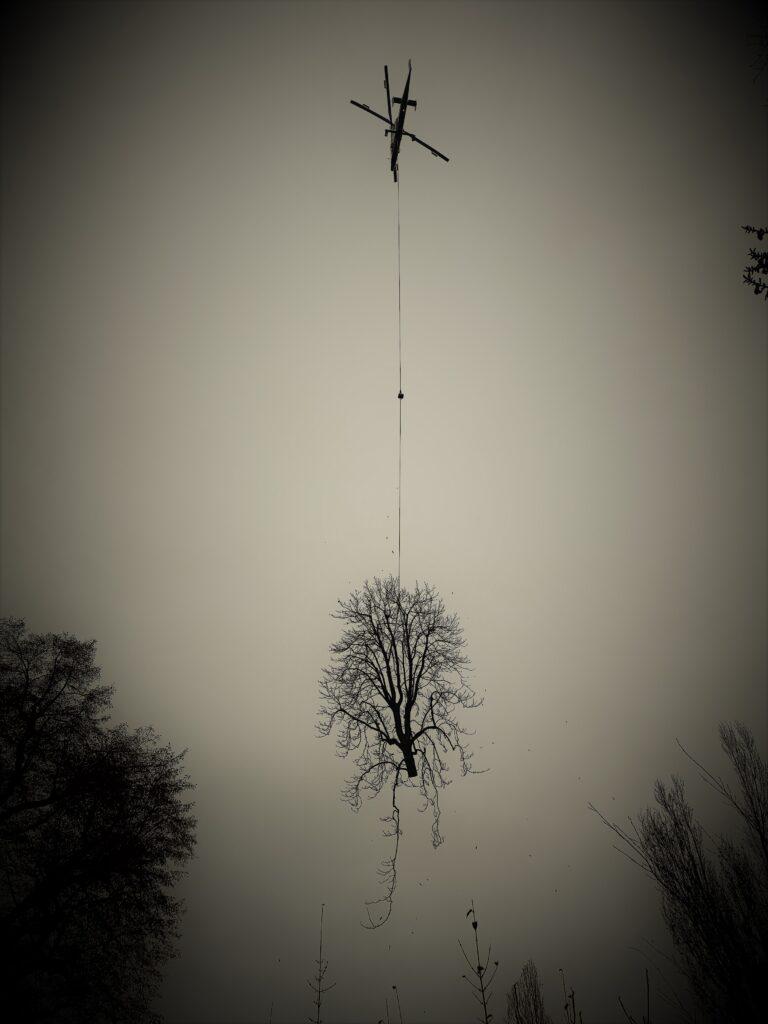
The helicopter frame is of simple and sturdy design and is made out of light alloy material. The intermeshed and contra-rotating rotor blades, which remove the need for a tail rotor and have a diameter of 14.70 meters and a speed of 250-270 rpm, are fashioned with high strength carbon and glass fibre reinforced plastic materials for high levels of durability.
They are also able to be folded sideways in the event that the helicopter needs to park in a narrow area.
The rotors are fitted with the unique servo-flap, which is located on the trailing edges of each blade, and can be controlled by the pilot to increase angle of attack and produce more lift.
In the event of an engine failure, the flaps automatically increase the angle of attack on the rotors and slow down the speed of the rotor so the pilot can more easily perform an emergency maneuver.
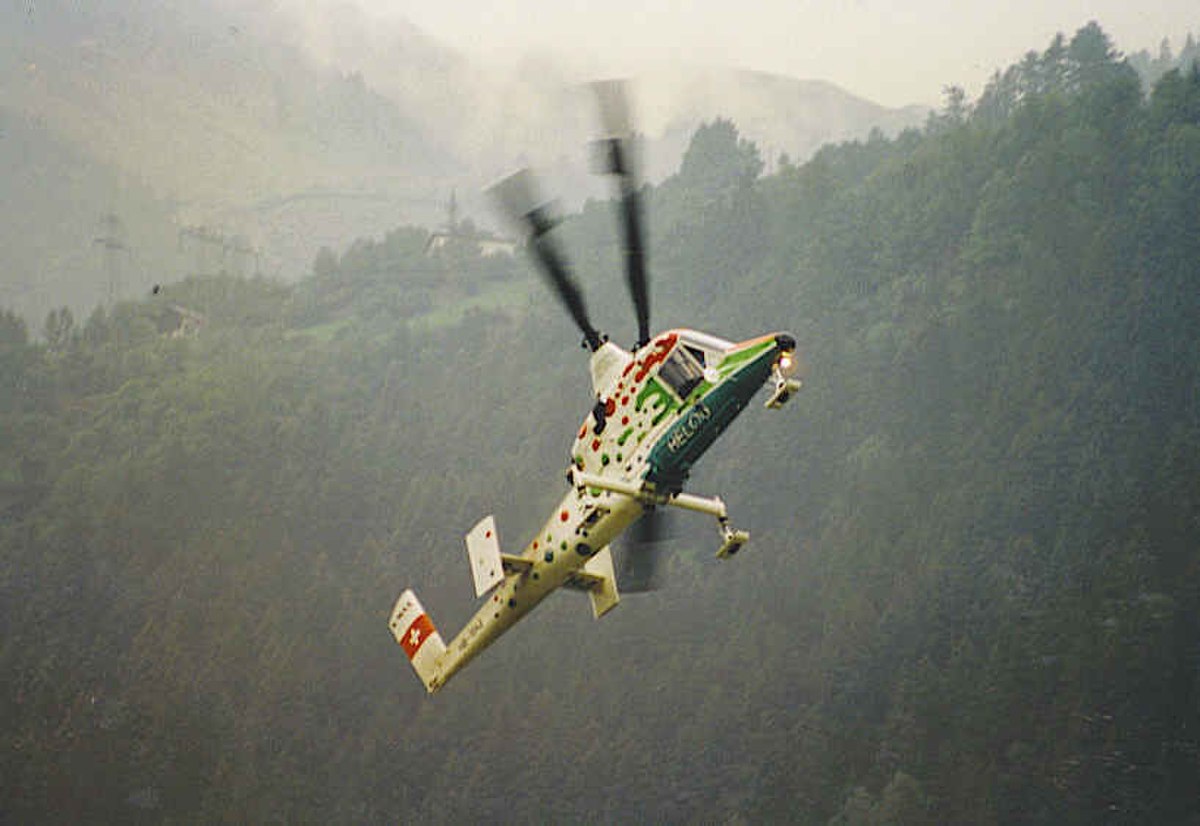
The K-MAX possesses a fixed tricycle landing gear, whose wheels are equipped with bear paw plates for ease of take off from snow or soft ground, and for particularly heavy lifts it is further supported with impact resistant compressed rubber suspension units on the transverse tube where the main wheels are mounted.
The K-MAX cockpit, as well as being installed with lights so it can undertake nighttime missions, possesses a curved windscreen offering excellent forward, side, and downward visibility to the pilot who sits in an impact-resistant seat with a five point harness, and two passenger seats can be optionally added to the sides of the helicopter in front of the main wheel legs.
The cockpit also features a cargo area which can fit 500 pounds of equipment in an area that is 0.73 m3 large.
The K-Max can be operated unmanned by personnel on the ground with a laptop installed with command and control software which communicates with the onboard Mission Management Computer (MMC).
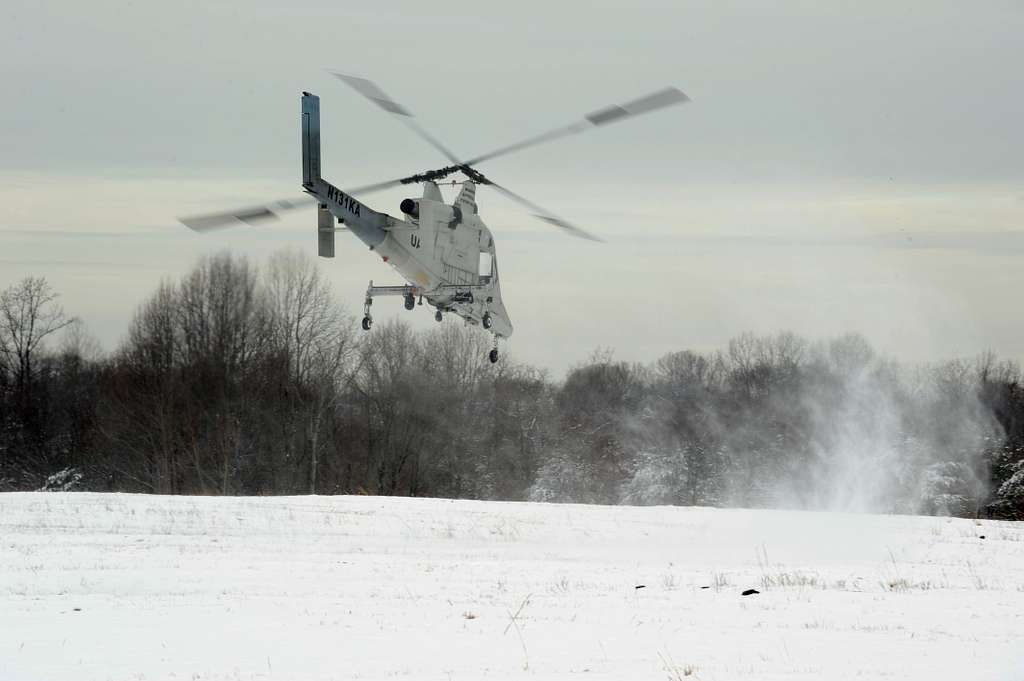
The controller can upload new mission plans mid-flight to the built-in autopilot system, and can remotely take full control of the aircraft to accurately drop loads. To ensure that connectivity is never lost, the K-MAX is installed with line-of-sight and satellite based beyond line-of-sight data links, which provide constantly updating information on the flight status.
Operating History
The K-MAX helicopter has been deployed in countries around the world for a variety of purposes including logging, firefighting, and military and civilian cargo lifting.
One of Switzerland’s most respected helicopter logging firms, Rotex Helicopter AG, was one of the first buyers of a K-Max, designated HB-XHJ, in 1995, and currently employs 3 of them in their fleet. In addition, in December 2000 whilst working for an American logging business, Woody Contracting, a K-MAX reached 10,000 flying hours for the first time.
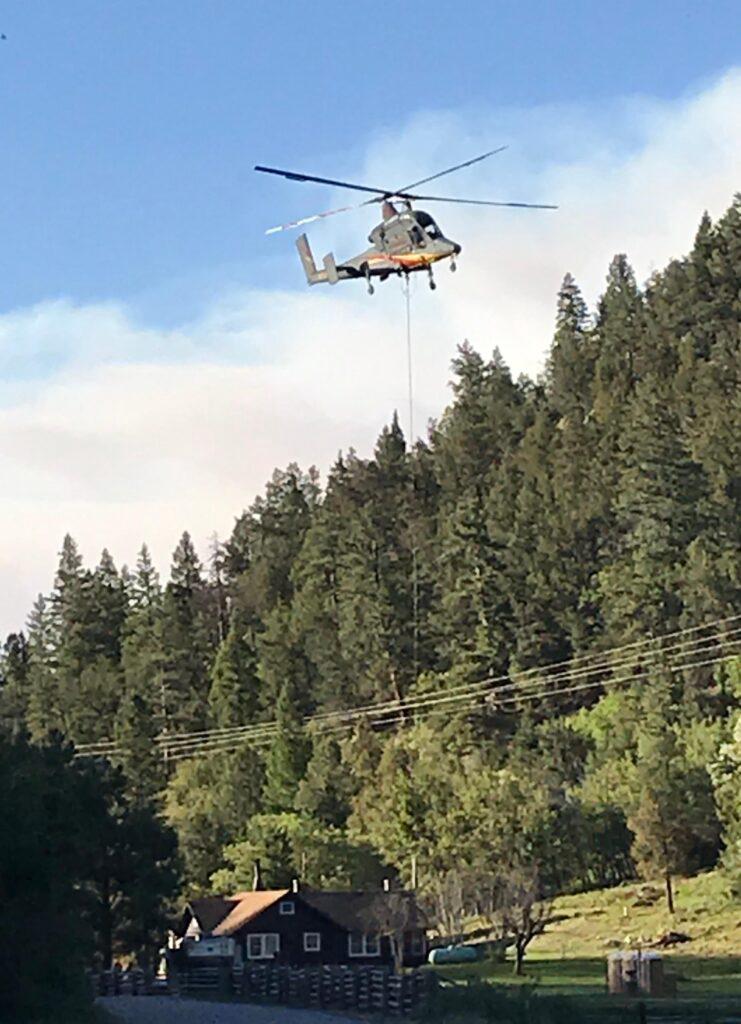
Over the years, the K-MAX has become a staple of military forces in every corner of the globe. It was employed by the US Navy in August 1995 as part of a $690,000 contract exploring vertical replenishment, which is when a helicopter supplies a seaborne vessel, and it was again called into action in May 1996 in Guam where it flew 142 hours and lifted a total of 2,449,400 kg.
The next month in June 1996 it was assigned to the USS Niagara Falls in the Arabian Gulf as part of a $5.7 million six-month deployment, and in August 1998 it was evaluated for Magic Lantern mine detection systems, later proving itself to be an effective minesweeper when it recovered two dozen torpedoes on behalf of the US Naval Undersea Warfare Center in November 2001.
More recently, between 2011 and 2014, 2 of them were deployed in Afghanistan where they transported thousands of tonnes of equipment together.
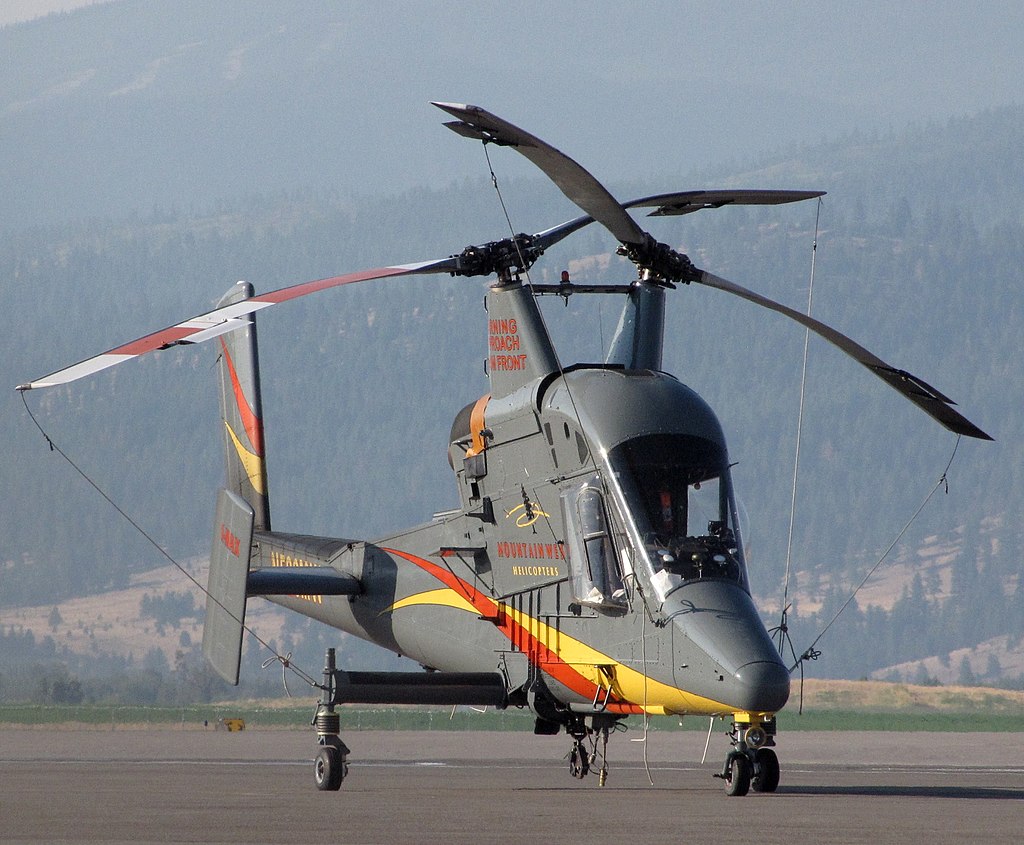
Elsewhere, five K-MAXs were bought by the Columbian military, which has used them to carry out counter-drug smuggling operations, and the K-MAX is also part of the Malaysian Air Force which is used for firefighting.
The K-MAX has been used in a variety of civilian construction projects. In January 2011, it carried six sections of a 36.05-meter electrical power transmission system in Queensland, Australia, and it has also seen service in Bolivia, where its load-carrying capabilities have been used to build drilling rigs and support oil-drilling missions while flying in temperatures reaching up to 107 degrees Fahrenheit and at altitudes of more than 3,000 feet.
Specifications
Crew: 1
Length: 52 ft (16 m) rotors running
Width: 51 ft 5 in (15.67 m) with rotors running
Height: 13 ft 7 in (4.14 m) to centreof hubs
Empty weight: 5,145 lb (2,334 kg)
Max takeoff weight: 6,500 lb (2,948 kg) without slung load
Powerplant: 1 × Honeywell T53-17A-1 turboshaft engine, 1,350 shp (1,010 kW)










